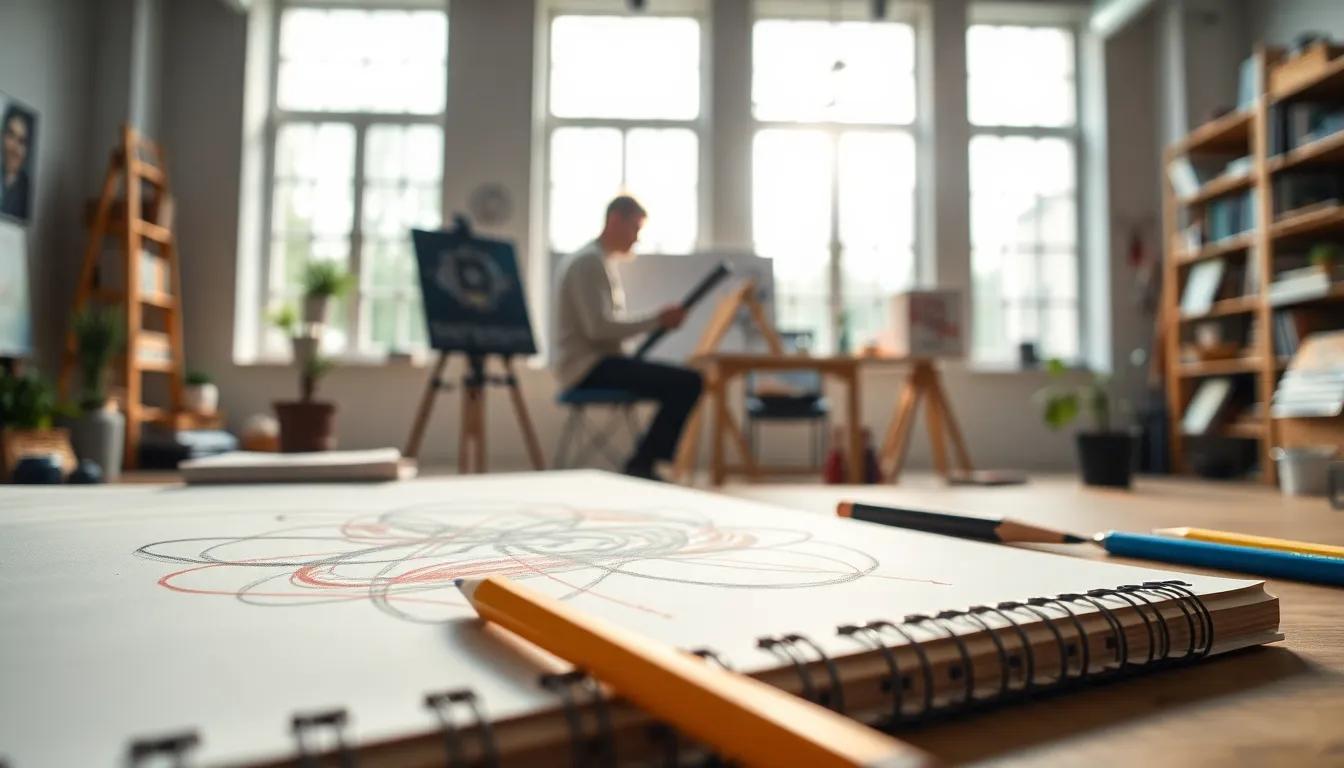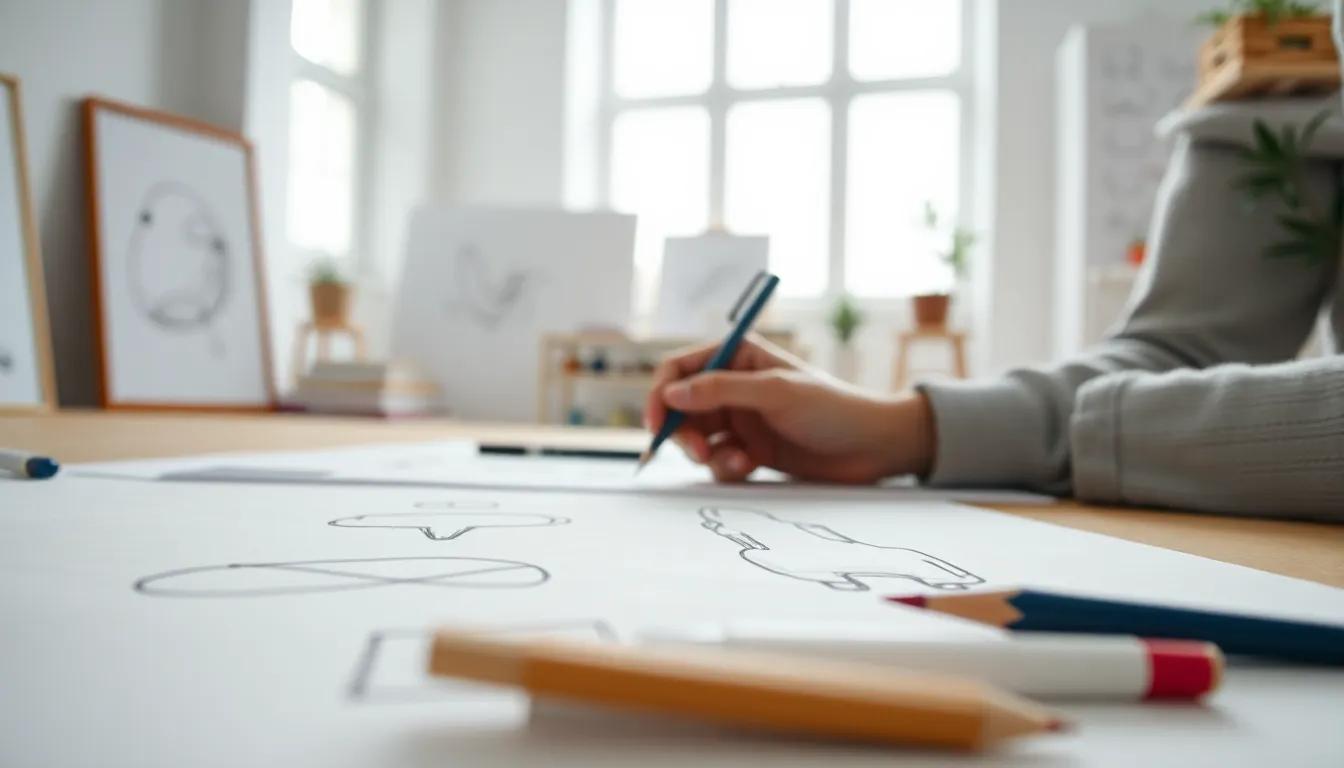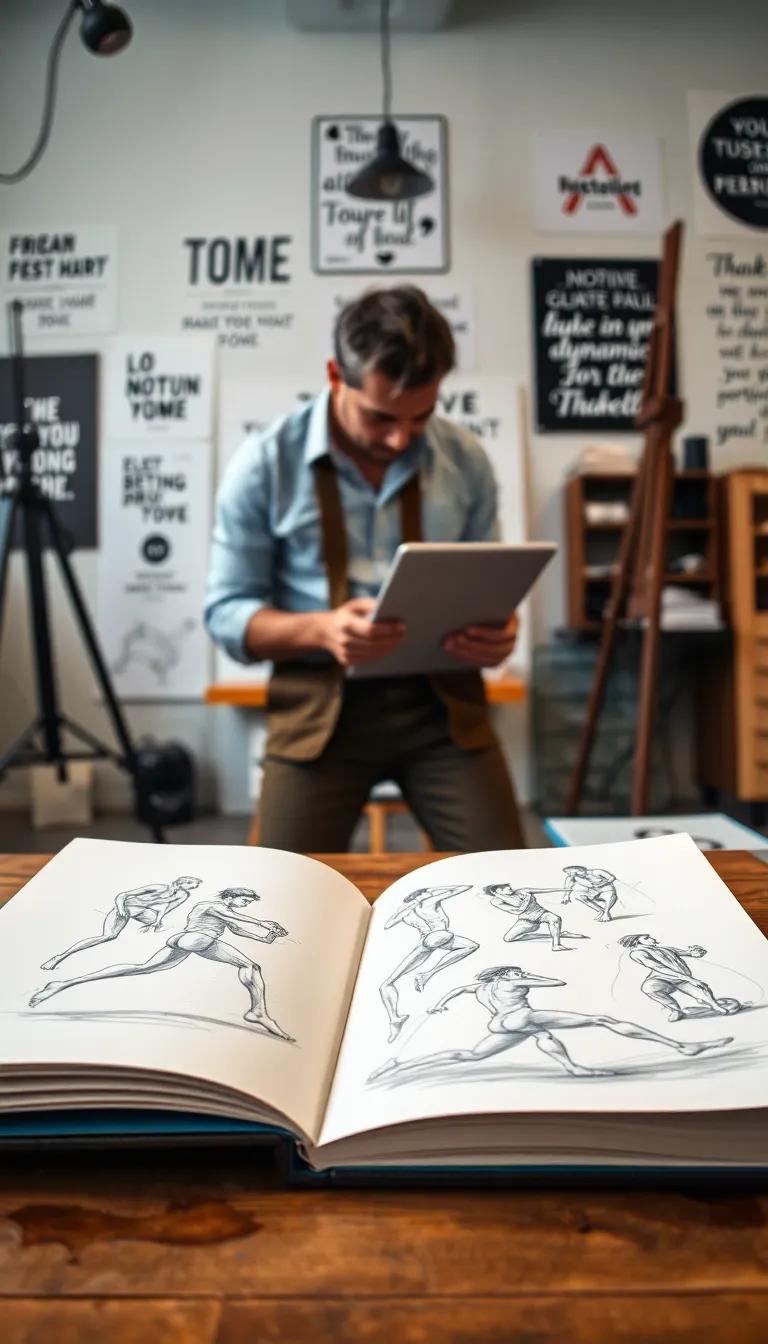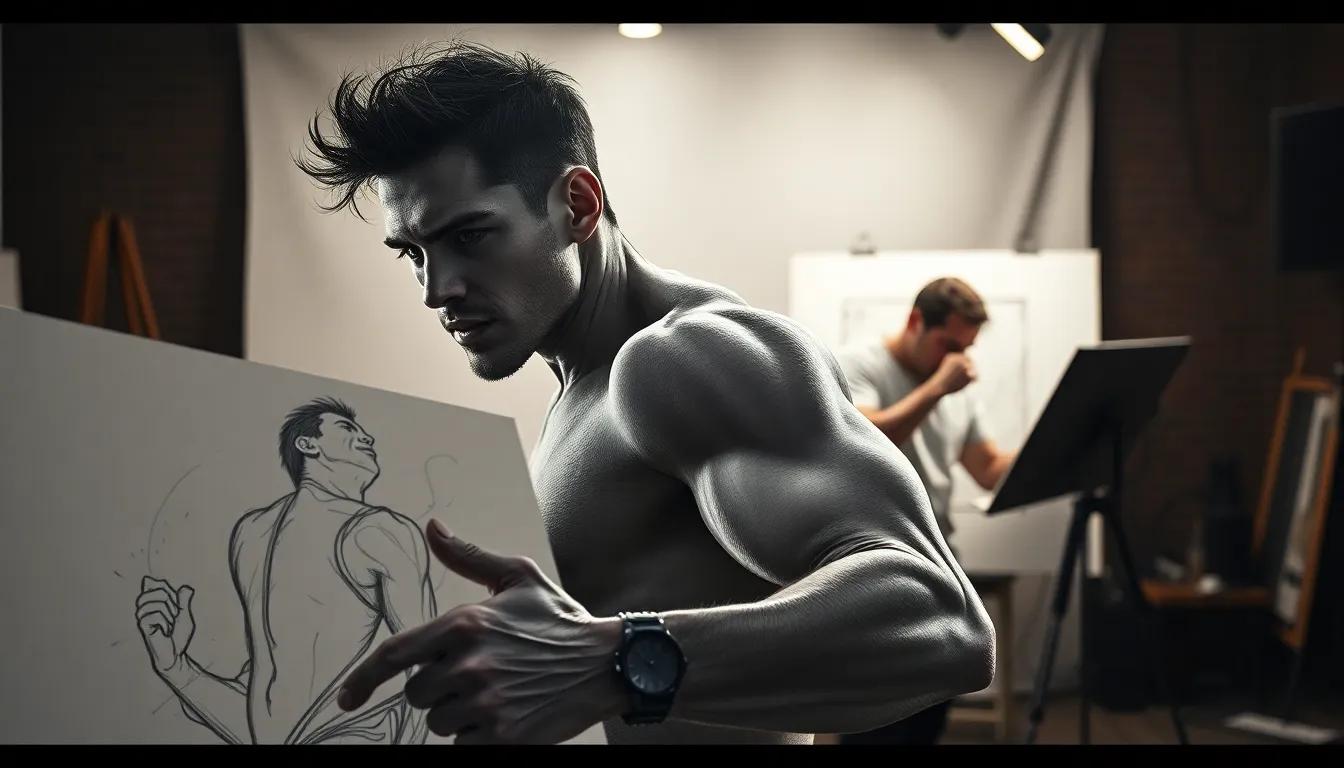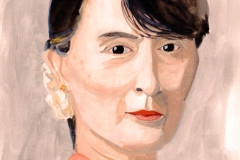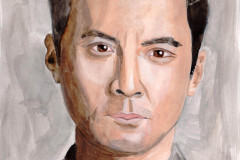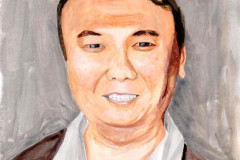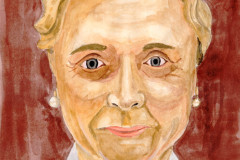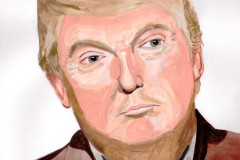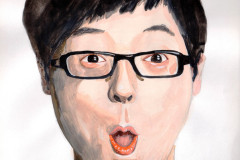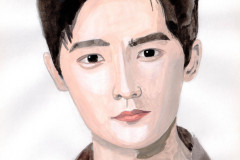Introduction
The human figure, in its myriad forms and poses, serves as a timeless muse for artists seeking to capture emotion, movement, and narrative in their work. Understanding the intricacies of dynamic figure poses is essential for anyone aspiring to create expressive art, whether through traditional drawing mediums or digital platforms. This article explores the fundamental aspects of figure poses, detailing the techniques and approaches that can elevate your artistic creations, making them more engaging and impactful.
As artists, we endeavor to communicate visual stories that resonate with viewers. By harnessing the potential of dynamic figure poses, we can add depth and vitality to our illustrations, sculptures, or animations. This comprehensive exploration will provide insights into the various approaches and tools available to artists, guiding you through the journey of mastering figure poses that convey emotion and movement effectively, leading to more vibrant artistic expressions.
Understanding Figure Poses The Role of Dynamic Figure Poses in Visual Storytelling
Defining Figure Poses in Artistic Expression
Figure poses are essential components of artistic expression, individuals’ positions and movements captured in a still frame that communicates not only a subject’s physicality but also their emotional state, narrative context, and personality. Artists study these poses to create relatable or intriguing characters, using the body as a tool for storytelling. The significance lies in how these poses impact visual storytelling; a single pose can suggest action, convey emotion, or establish a mood, all while guiding the viewer’s eye across the artwork.
Dynamic figure poses amplify these aspects even further. By infusing motion into art, they evoke a sense of life and immediacy. Observing a dancer in mid-leap or a runner propelling forward presents an opportunity for artists to capture energy and vitality in their work. Such poses, teeming with movement, do more than depict action; they evoke sensation and invitation, encouraging the viewer to engage deeply with the narrative.
Significance in Visual Storytelling
The way a figure is posed can alter the interpretation of the entire piece. For instance, a character bent forward with arms outstretched may imply desperation or vulnerability, whereas an upright, regal pose can embody confidence or authority. Juxtaposing contrasting poses within a composition builds tension or harmony, affecting how stories unfold visually. This dynamic quality enhances emotional resonance, allowing artists to weave complex narratives through the subtleties of body language.
Understanding figure poses is paramount to mastering the art of visual storytelling. Whether through static or dynamic movements, these poses encapsulate the essence of characters and their emotions, allowing artists to express complex ideas succinctly. The careful choice of pose invites viewers not only to see but to feel, experience, and connect with the story portrayed, demonstrating the power of movement and stillness in art.
Techniques for Capturing Dynamic Movement in Figure Poses
Understanding Techniques for Expressive Art
Illustrating the essence of movement in figure poses is a vital skill for any artist striving to create dynamic and expressive artwork. One of the core techniques for conveying movement lies in the application of fluid lines. When sketching figures, artists often utilize sweeping curves that suggest motion. By focusing on the flow of the body rather than rigid outlines, the drawing captures an organic sense of dynamism, making the pose feel alive.
Another effective method is the use of foreshortening. This technique involves depicting an object or figure in a picture in depth, causing it to appear shorter than it actually is. Artists manipulate perspective to illustrate a figure reaching toward or away from the viewer, creating a compelling illusion of three-dimensionality. This technique is particularly potent when capturing action poses, as it accentuates the speed and energy of the movement.
Gestural Drawing and its Impact on Expressiveness
Gestural drawing serves as another powerful tool for artists looking to convey dynamic figure poses. This technique emphasizes quick, expressive strokes that capture the essence of a pose while prioritizing motion over detail. By rapidly capturing the primary shapes and lines of the figure, artists can convey emotion and energy, creating a more expressive representation. These quick sketches can serve as excellent warm-ups, helping artists transition into more detailed studies.
In addition to gestural drawing, the concept of line of action plays a crucial role in depicting movement. The line of action is an imaginary line that runs through the figure, illustrating the primary direction of motion. By establishing a clear line of action, artists can structure their poses to emphasize balance and flow, reinforcing the illusion of movement. This foundational principle can guide the artist’s hand, allowing for more dynamic compositions and enhancing the overall expressive quality of the artwork.
Incorporating contrasting shapes and angles creates visual tension in the figure poses, heightening the sense of dynamism. When certain parts of the figure are angled sharply against the curves of another, the resulting visual contrast can evoke a sense of dramatic energy. By combining these various techniques thoughtfully, artists can effectively master the art of dynamic figure poses, enriching their expressive art creations.
Observation and Life Drawing Mastering Figure Poses for Expressive Art
The Significance of Live Model Observation
Engaging with live models is a cornerstone of mastering dynamic figure poses and enhancing artistic expression. Observing real-life human figures provides a wealth of information that photographs or digital representations simply cannot capture. Live models bring a sense of movement, emotion, and spontaneity that enriches the drawing process. Artists can study the nuances of posture, muscle tension, and weight distribution as the model shifts and changes positions in real time.
This direct observation fosters a deeper understanding of anatomy and proportion, allowing artists to make informed choices about how to portray the human experience in their work. When capturing dynamic poses, attention to detail becomes vital. For instance, the way a hand bends or how the torso twists in a particular pose conveys narrative and emotion, qualities that resonate more profoundly when artists draw from life.
Engaging in Life Drawing Sessions
Participating in life drawing sessions cultivates skills that are hard to replicate in isolation. These sessions encourage artists to draw quickly and intuitively, sharpening their ability to capture movement. Working alongside fellow artists also fosters an environment of shared learning and inspiration, promoting discussion about techniques and interpretations of dynamic poses.
Life drawing often involves working with a variety of poses, ranging from quick gesture studies to longer, sustained sessions that allow for deeper exploration of form and detail. Gesture drawing, in particular, teaches artists to prioritize the essence of movement over meticulous detail, highlighting the importance of rhythm and flow in figure drawing.
Practicing with live models can build confidence in an artist’s ability to portray motion convincingly. Through repetition, artists internalize how body mechanics function, which can translate into their expressive art creations. Ultimately, the interplay between observation, life experience, and artistic expression is vital for developing a unique voice in figure drawing.
As artists hone these skills through observation and practice, they position themselves to utilize digital tools in innovative ways, blending traditional techniques with contemporary technology to create striking and dynamic works of art. This dynamic integration of physical and digital resources forms the basis for the next chapter, exploring how digital tools can aid in creating and manipulating figure poses.
Digital Tools for Figure Posing Enhancing Artistic Expression
Exploring Digital Innovations in Figure Posing
In recent years, digital tools have revolutionized the way artists approach figure posing, making it easier to create dynamic and expressive figures. Software applications specifically designed for artists offer a vast range of functionalities, including 3D modeling and pose manipulation. These digital solutions enable artists to visualize human anatomy in a three-dimensional space, allowing for a better understanding of body mechanics and movement.
Among the popular tools available, programs like Daz 3D, Poser, and Clip Studio Paint have gained prominence for their comprehensive figure posing capabilities. They provide artists with a library of customizable human models that can be posed in various stances. Users can manipulate limbs, adjust the tilt of the head, and even change the model’s proportions to capture the essence of their intended expression. This flexibility encourages experimentation, enabling artists to find unique poses that may not be feasible with traditional models.
Creating and Manipulating Poses
One significant advantage of utilizing software for figure posing is the ability to rotate, zoom, and manipulate figures in real-time. As artists can adjust poses with precision, they can observe the movement and flow of each stance, gaining insights into what makes a pose dynamic. For instance, through layering different poses, artists can visualize the transition between movements, fostering a deeper understanding of kinetic energy and balance. The capacity for rapid iteration allows for a trial-and-error approach, which can enhance the creative process.
Digital platforms often include tools for rigging and animation, which can breathe life into static poses. Artists can simulate motion, thus bringing new layers of expressiveness to their artwork. This fluidity not only adds depth to artistic creations but also opens opportunities for exploring narratives through movement. Each pose can convey a story, and the dynamic adjustments enabled by digital software can help articulate these emotions effectively.
Despite the advantages of digital tools, artists must remember the importance of observational skills cultivated through traditional life drawing. Engaging with live models provides essential insight into natural human postures and the subtleties of emotion. Digital tools should complement this foundational knowledge, allowing artists to blend traditional techniques with modern technology for more profound artistic expressions.
Expressiveness in Figure Poses Conveying Emotion and Narrative
Figure poses hold immense power in visual storytelling, serving as conduits through which emotions and narratives are conveyed. Whether through the delicate tilt of a head or the dynamic stretch of an arm, each pose can articulate a myriad of feelings, allowing artists to communicate complex ideas without uttering a single word. The artistry lies not just in the accuracy of the pose but in the ability to evoke an emotional response from the viewer.
Embodying Emotions through Poses
Different physical positions can signify various emotions. A figure hunched over with drooping shoulders can represent sadness or defeat, whereas a pose with an extended arm and open stance may convey confidence or triumph. To capture these moods accurately, artists should consider the placement of the body, the direction of limbs, and the overall silhouette created by the figure. Achieving specific emotional expressions requires understanding anatomical subtleties and translating them into visual language.
For instance, the contrast between tension and relaxation can significantly enhance the narrative aspect of a piece. A character caught in mid-action, like a runner lunging forward, embodies urgency and determination. Conversely, a figure seated with a relaxed posture can evoke contemplative or introspective feelings. The challenge lies in ensuring that the pose aligns with the intended emotional context, thus creating a seamless connection between viewer and subject.
Narrative Depth through Dynamic Actions
A dynamic figure pose can tell a story as rich as any written narrative. An artist can illustrate a moment of conflict, joy, or transition through carefully chosen actions and postures. Action poses, like jumping or reaching, can suggest movement and progression, drawing viewers into the unfolding drama. For example, a character with a suggestive forward lean may imply pursuit or conflict, while a backward stance might indicate retreat or contemplation.
Artists can use these dynamic poses to reinforce story arcs, character development, or emotional complexities. By combining various poses and gestures within a scene, layers of meaning can emerge, enriching the artwork and providing viewers with a deeper experience. The effectiveness of figure posing in expressing these elements lies in the artist’s ability to balance anatomical accuracy with expressive intent, crafting a piece that resonates on multiple emotional levels.
Integrating Backgrounds and Environments Enhancing Figure Poses for Expressive Art Creations
Creating Context for Emotion
In expressive art, the integration of backgrounds and environments plays a pivotal role in accentuating the figure poses within a composition. The right background not only adds depth and dimension, but it also helps to contextualize the emotions and narratives conveyed through the figures. When selecting or designing a background, consider how it complements the dynamic poses, thereby enhancing the overall expressive quality of the artwork.
A harmonious background can accentuate the energy of a figure pose, guiding the viewer’s eye and emphasizing the intended message. For instance, if a figure exudes joy and vitality through a dynamic pose, a bright, lively background—such as a sunlit park or a bustling city street—can magnify that exuberance. Conversely, a figure capturing a moment of introspection or tension may find resonance in a muted, minimalist backdrop, perhaps a dimly lit room or a stark landscape that emphasizes isolation.
Matching Movement and Mood
It’s essential to ensure that the environment enhances the movement and mood of the figures depicted. To achieve this synergy, consider employing color theory and compositional techniques. Utilizing a color palette that reflects the emotions of the figures can create a seamless union. For example, warm hues like reds and yellows can evoke passion and energy, while cooler shades such as blues and greens can impart calmness or melancholy.
Compositional balance is also significant. A well-placed horizon line or an engaging foreground can ground the figures, establishing a relationship between the subject and the environment. Experimenting with different perspectives, such as a low angle that elevates the figures against a backdrop, can add drama and intrigue, creating a focal point that draws the viewer in.
Incorporating elements like shadows, light sources, and textures into the background adds realism and complexity, encouraging a more immersive interaction with the figures. These elements can create a narrative thread that links the figure with its surroundings, encouraging viewers to explore not just the pose, but the entire artwork’s story.
When integrating backgrounds and environments, strive for a holistic approach that elevates both the figures and the surrounding context. By doing so, you enrich the viewer’s experience and leave a lasting impact, making your expressive art creations truly resonate.
Final Thoughts on Mastery and Creativity Continuous Learning in Dynamic Figure Poses
The journey to mastering dynamic figure poses is an ongoing process that requires both practice and dedication. Artistic expression flourishes in a space where constant exploration and skill enhancement are encouraged. As artists strive to create more immersive and expressive pieces, it is essential to embrace a mindset that views learning as a perpetual cycle rather than a one-time destination.
Dynamic figure poses offer a remarkable opportunity to convey emotion, action, and narrative, thus elevating the visual experience. Understanding the nuances of body language and movement can significantly impact how a piece is perceived. Taking the time to study human anatomy, gesture, and balance can inform and enrich the artist’s technique, allowing for poses that resonate on a deeper level.
Here are a few suggestions to stimulate continuous learning and creativity in figure posing:
- Engage in regular practice: Make it a habit to sketch figures in various dynamic poses frequently. Use life drawing sessions or online resources to observe and capture movement in real-time.
- Participate in workshops: Attend classes or workshops focused on figure drawing. These settings often provide feedback and guidance from experienced instructors, enhancing one’s skills dramatically.
- Study the works of others: Analyze how other artists convey motion through their figures. Look into different styles and mediums to inspire new approaches in your work.
- Experiment with different mediums: Working in various formats, such as charcoal, digital, or painting, can help in understanding how the medium influences the portrayal of dynamic figures.
- Collaborate with other artists: Sometimes, a fresh perspective from peers can shed light on new techniques or approaches that you may not have considered, encouraging a collective growth experience.
Encouraging creativity goes hand-in-hand with challenging oneself to go beyond the comfort zone. Artists should seek to push their boundaries by experimenting with unconventional angles, poses, and compositions. This risk-taking not only leads to innovative outcomes but also fuels an artist’s passion and excitement for creation.
In the end, mastering dynamic figure poses is not merely about achieving technical proficiency but rather how those techniques can be employed to evoke emotion and narrative within the artwork. By fostering a commitment to learning and creativity, artists can render pieces that not only showcase their skills but also resonate deeply with their audience.
Conclusions
Mastering dynamic figure poses is an invaluable skill that contributes significantly to the richness of artistic creations. By understanding the principles of human anatomy, embracing various drawing techniques, and studying movement, artists can create works that are not only visually compelling but also emotionally resonant. As we have seen throughout this article, the essence of figure drawing lies in its ability to convey the nuances of human expression and dynamic motion.
As you continue to develop your practice, remember that experimentation and observation are critical factors in refining your skills. Immerse yourself in life drawing sessions, reference photographs, and diverse poses to expand your artistic repertoire. Ultimately, the goal is to imbue your artwork with the lively energy that dynamic figure poses provide, ensuring that each creation tells its own unique story.



